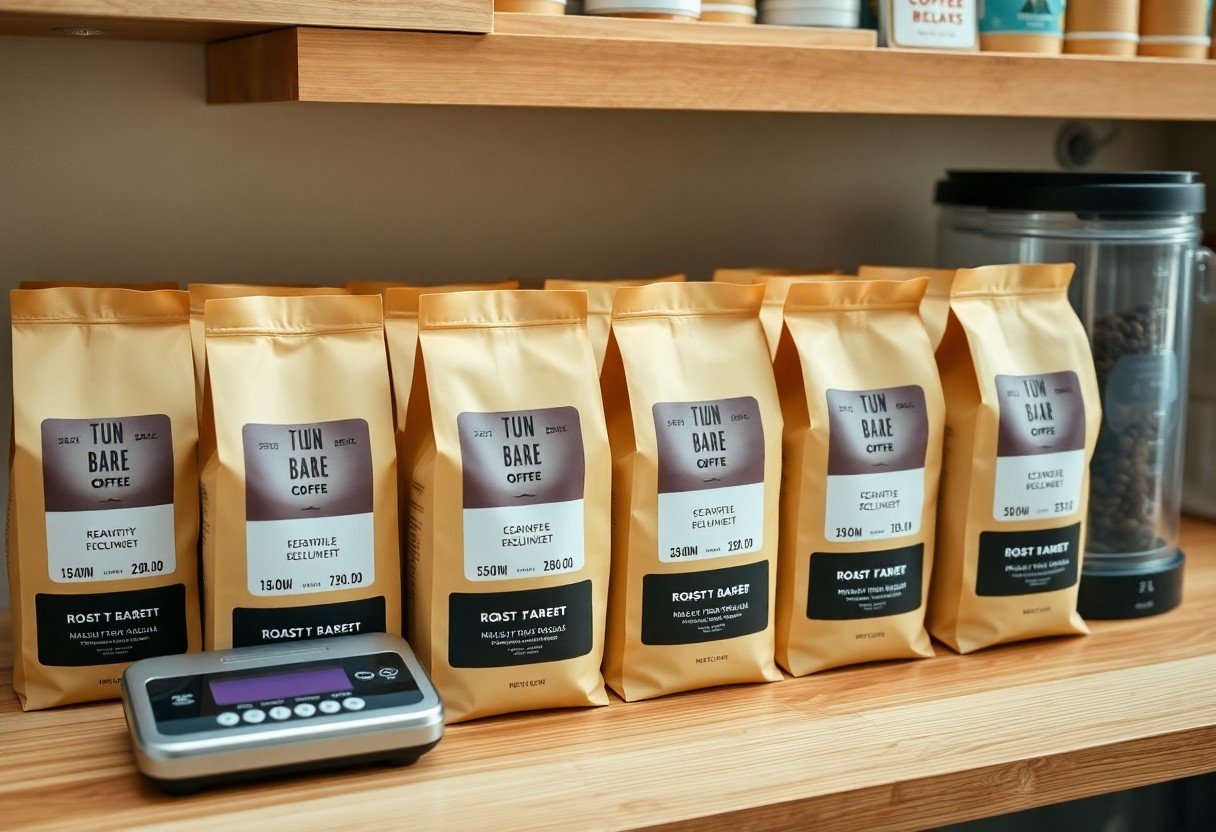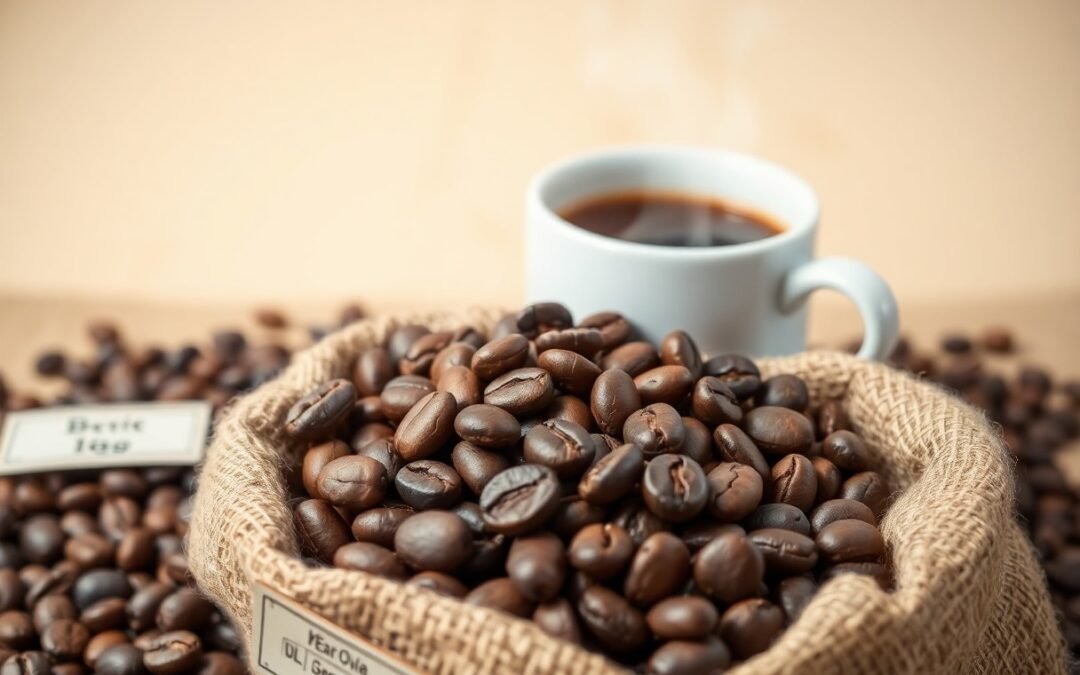The True Shelf Life of Coffee Beans
Understanding Coffee Freshness
Your coffee beans possess an optimal shelf life that varies depending on their type and storage conditions. Generally, whole beans can maintain peak freshness for about 6 to 9 months when stored properly, while ground coffee only lasts about 3 to 4 months. The moment you open a bag, the aging process accelerates due to exposure to air and light, leading to flavor deterioration. Studies reveal that after just one to two weeks post-roasting, significant loss of aroma and flavor begins, making it important to consume your coffee promptly.
Storage Solutions for Longevity
Factors That Influence Coffee Bean Longevity
Multiple elements determine how long your coffee beans will stay fresh and flavorful. By understanding these factors, you’re equipped to maintain the quality of your coffee for longer periods. Key influences include storage conditions, the temperature debate, humidity levels, and packaging methods.
- Storage Conditions
- Temperature
- Humidity Levels
- Packaging Method
Assume that the conditions in which you keep your coffee beans can significantly affect their longevity and flavor profile. Being mindful of these factors will enhance your brewing experience.
Storage Conditions: The Temperature Debate
| Temperature | Impact on Coffee |
|---|---|
| Cool (50-70°F) | Ideal for maintaining freshness and flavor |
| Room Temperature (70-75°F) | Acceptable, but a slight decrease in quality over time |
| Warm (75-85°F) | Accelerates aging and flavor degradation |
| Hot (above 85°F) | Quickly diminishes quality and flavor |
Temperature plays a critical role in coffee bean longevity. Keeping your coffee at a cool, stable temperature prevents the oils from becoming rancid and the flavors from fading. Fluctuating temperatures can introduce moisture, which negatively affects the beans. Your best bet is to find a dark, temperate spot to store your coffee, veering away from direct sunlight or heat sources.
Packaging Matters: Vacuum-Sealed vs. Bagged
Choosing the correct packaging can make a significant difference in how long your coffee beans remain fresh. Vacuum-sealed bags keep your beans protected from oxygen exposure, preserving flavor and aroma effectively. In contrast, traditional bags often allow air and moisture to infiltrate, which can lead to quicker degradation. Vacuum-sealed options are especially advantageous for long-term storage, while bagged coffee may offer convenience in daily use but requires quicker consumption.
Investing in vacuum-sealed packaging not only helps to lock in freshness but also extends the shelf life of your coffee. Studies show that beans stored in vacuum-sealed bags can last up to 12 months, retaining flavor integrity, compared to bagged coffee, which may only last a few weeks when exposed to the elements. The difference in preservation can be profound, influencing both taste and overall quality of your daily brew. Think about how your storage choices could enhance your coffee enjoyment.
Delightful Deterioration: Understanding Flavor Changes
As your coffee beans age, their flavor profile evolves through a natural process of deterioration. The rich, vibrant notes that characterize freshly roasted coffee gradually give way to more muted and sometimes unpleasant flavors. This transformation results from chemical reactions between the compounds in the beans, leading to a complex interplay of aromas and tastes that can either delight or disappoint your palate. Keeping an eye on your coffee’s age is crucial for enjoying the optimal experience each brew has to offer.
How Age Alters Aroma and Taste
With time, your coffee beans lose their lively aromas and complex flavors, transitioning to a more stale profile. Freshly roasted beans typically exhibit bright acidity and floral notes, while older beans may present a flat or bitter taste. You might also notice that sweet, fruity undertones fade, replaced by earthiness or a cardboard-like flavor. Your brewing method, storage conditions, and the bean variety all influence this aging process, ultimately impacting your everyday coffee experience.
The Chemical Processes Behind Degradation
Aging coffee beans involves a series of complex chemical changes that affect compounds responsible for flavor and aroma. Over time, oxidation occurs as oxygen interacts with the oils and acids in the beans. This can lead to rancidity, altering the original flavor profile. Moreover, moisture absorption affects the solubility of sugars and the Maillard reaction, hindering your coffee’s sweetness and body. These processes result in a gradual decline in flavor quality, making fresh beans crucial for a satisfying cup.
Oxidation is a fundamental factor in the degradation of your coffee beans. It creates off-flavors and diminishes the aromatic quality by breaking down key compounds, such as lipids, flavonoids, and phenols, which contribute to the overall taste. Additionally, exposure to light and heat accelerates these reactions, leading to an even quicker decline in quality. While some flavors may initially seem pleasant, the ongoing degradation ultimately compromises your coffee’s integrity, illustrating the importance of consuming your beans promptly after roasting for the best brew possible.

Expert Tips for Maximizing Freshness
To ensure your coffee beans remain flavorful for as long as possible, consider implementing these expert tips:
- Store beans in an airtight container.
- Keep them in a cool, dark place away from heat and moisture.
- Grind only what you need for immediate use.
- Opt for whole beans over pre-ground coffee.
- Use the right amount of beans for your brew method.
Any adjustments to your everyday coffee routine can significantly enhance the freshness of your beans and your overall experience.
Best Practices for Home Storage
Seal your coffee beans in a dark, airtight container to keep them protected from light and oxygen. Glass jars with tight lids or specialized coffee canisters work wonders. Try to avoid storing beans in the fridge, as the moisture can negatively affect their flavor. A pantry or cupboard in a stable, cool environment is ideal for maintaining optimal freshness and flavor.
When to Say Goodbye: Recognizing Spoiled Beans
Identifying if your coffee beans have gone bad involves a few key indicators. Look for a loss of aroma; if your beans lack that pleasant roasted scent, it’s a sign they may no longer be fresh. Additionally, inspect for any unusual discoloration or oily sheen, both of which can indicate spoilage. A stale taste upon brewing is another telltale indicator that it’s time to part ways with those beans.
Be aware that stale beans can also develop a cardboard-like flavor, lacking the vibrant notes that characterize freshly roasted coffee. If you find yourself grimacing at the taste, or if your coffee’s once bold aroma has faded, it’s likely time to retire those beans. For true coffee aficionados, investing in fresh beans guarantees a much more enjoyable cup and a truly satisfying experience.
The Economics of Freshness: Cost vs. Quality
Balancing cost and quality is necessary in the coffee market. Freshly roasted coffee beans come at a premium, often resulting in a higher price compared to mass-produced options. However, the investment in fresher beans can elevate your daily brew, offering a vibrant flavor profile that stale beans simply can’t match. This difference in taste can greatly enhance your coffee experience, reinforcing the idea that quality often comes with a price. For many coffee enthusiasts, the joy of earning every sip of an aromatic cup justifies the additional expense.
Is It Worth Paying More for Freshly Roasted Beans?
Purchasing freshly roasted beans may raise your coffee budget, but the payoff can be significant. Many aficionados agree that the enhanced flavor and aroma of freshly roasted beans vastly enhance your coffee experience. You may find the rich nuances and complex layers of flavor simply aren’t present in older, pre-packaged coffee. Investing in quality beans also supports local roasters and sustainable farming practices, making your coffee habit a more conscientious choice.
Market Trends in Coffee Sales and Consumer Preferences
Consumer preferences are shifting towards specialty coffees and freshly roasted options, as evidenced by the increasing popularity of local roasters. Recent surveys show that about 60% of coffee drinkers are willing to pay more for premium beans, signaling that quality is increasingly prioritized over price. This trend has led to a boom in direct-to-consumer coffee subscriptions and specialty cafes, providing you with wide access to fresh, artisanal coffee selections tailored to discerning palates.
As you probe into the evolving landscape of coffee consumption, you’ll discover that sustainability, ethical sourcing, and transparency are also influencing purchasing decisions. The rise of single-origin and organic coffees reflects an informed consumer base eager to support responsible practices. Many coffee drinkers now seek out not just great flavors but also the stories behind their beans, fostering a culture that values quality and ethics. This movement is shaping the marketplace by encouraging more brands to focus on delivering a unique, high-quality coffee experience while appealing to those environmentally conscious consumers.
Placing Your Coffee in Context: Global Perspectives
Your perception of coffee longevity is influenced by cultural attitudes and practices around the globe. In countries renowned for coffee consumption, such as Italy and Ethiopia, the emphasis on freshness shapes not only purchasing habits but also brewing techniques. This cultural context leads to an appreciation for coffee at its peak flavor, inspiring practices like locally sourced beans and artisanal roasting methods. Understanding these global perspectives can deepen your own coffee experience, encouraging you to prioritize quality and freshness in your daily brew.
Cultural Attitudes Towards Freshness in Coffee-Consuming Nations
The Ethos of Sustainability in Coffee Production
The ethos of sustainability in coffee production extends beyond individual consumer choices; it reshapes entire industry practices. For instance, initiatives like Fair Trade and Rainforest Alliance promote environmentally friendly farming while ensuring fair wages for farmers. This creates a more accountable supply chain that prioritizes both quality and environmental health. As you sip your coffee, you can feel good knowing that your beverage supports sustainable practices, positively impacting farmers and their communities worldwide, all while preserving the rich flavors you enjoy.
Q: How long do coffee beans typically last before they start to lose their flavor?
A: The longevity of coffee beans can vary depending on their type and storage conditions. Generally, whole bean coffee tends to retain its freshness for about 6 to 9 months when stored properly in an airtight container in a cool, dark place. Ground coffee, on the other hand, has a shorter shelf life of about 3 to 5 months. It’s important to note that while coffee may still be safe to consume after these time frames, its flavor profile and aroma can significantly diminish.
Q: What factors can influence the shelf life of coffee beans?
A: Several factors can impact the shelf life of coffee beans. Firstly, exposure to air can lead to oxidation, which degrades the quality of the beans. Therefore, storing coffee in airtight containers is advisable. Additionally, light and moisture can also affect the beans’ longevity, making it vital to keep them in a dark place away from humidity. Finally, the type of roast can play a role; for instance, darker roasts may have a shorter shelf life due to the oils released during the roasting process.
Q: Are there any signs that indicate coffee beans have gone bad?
A: Yes, there are several indicators that your coffee beans may no longer be good for consumption. The first sign is a change in aroma; fresh coffee has a rich and pleasant smell, while stale beans tend to have a flat or off-putting scent. Additionally, if you notice an oily sheen on the surface of the beans, it could be a sign that they are aging or have gone rancid. Lastly, if the beans have a dull or faded appearance or exhibit any signs of mold, it’s best to discard them for a fresher alternative.

